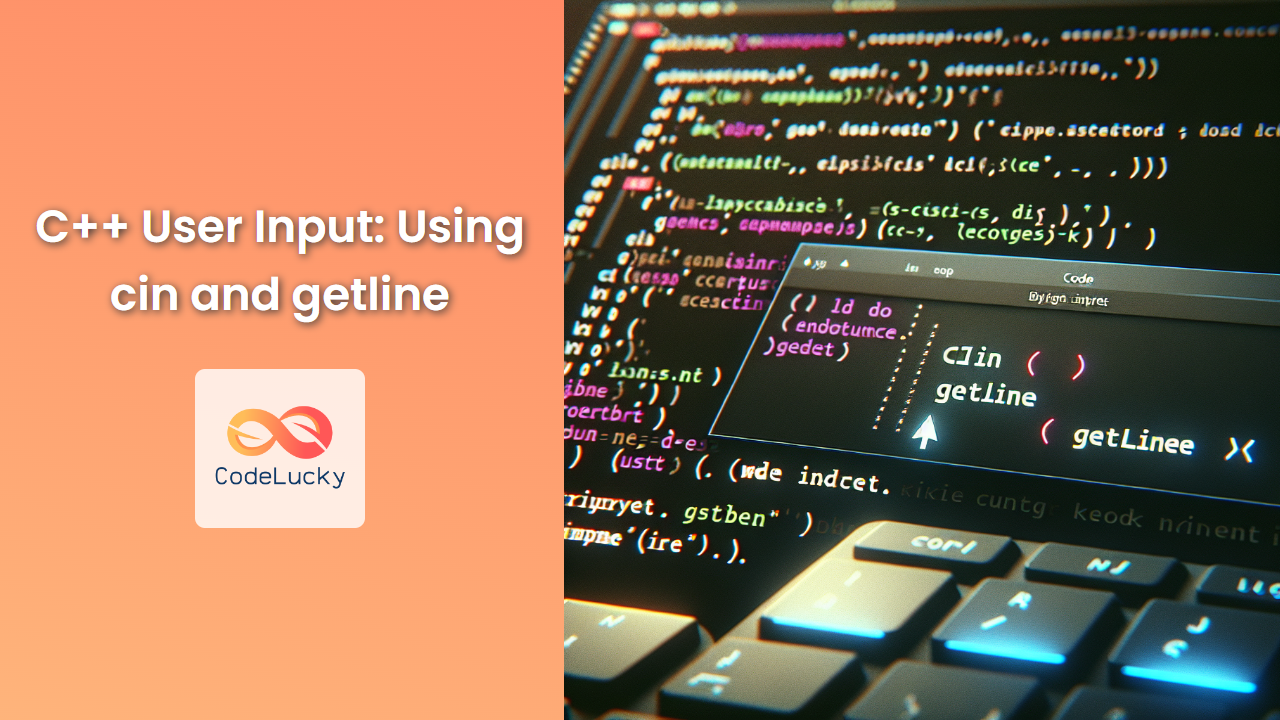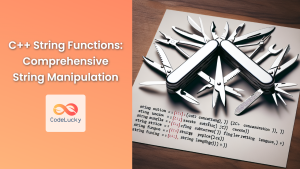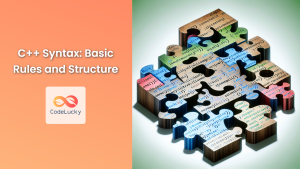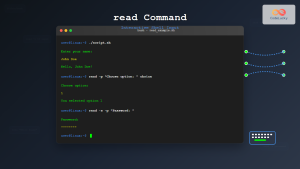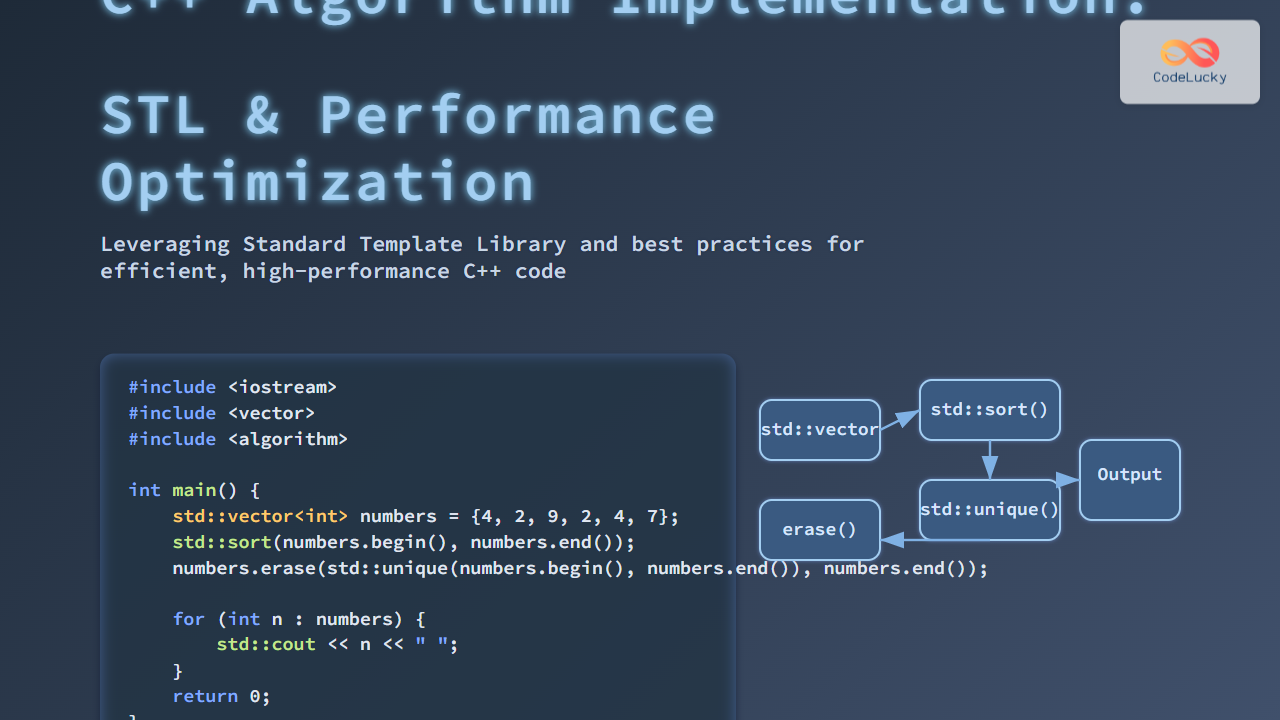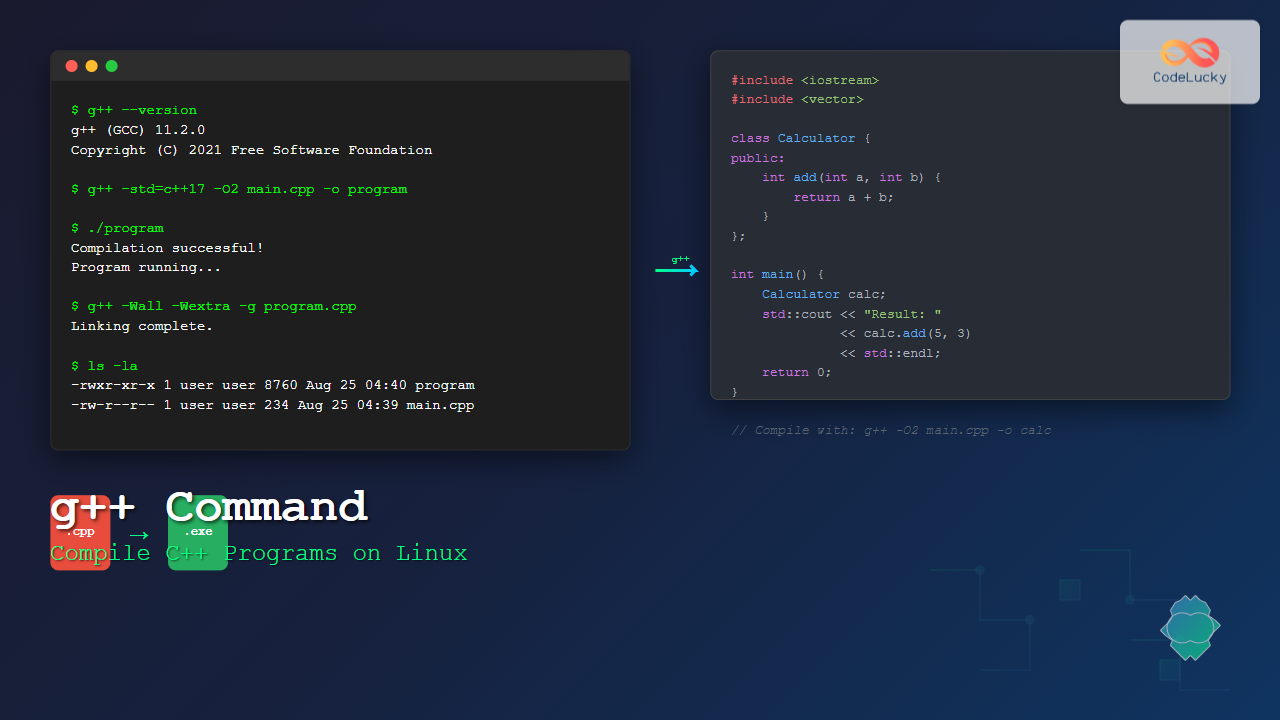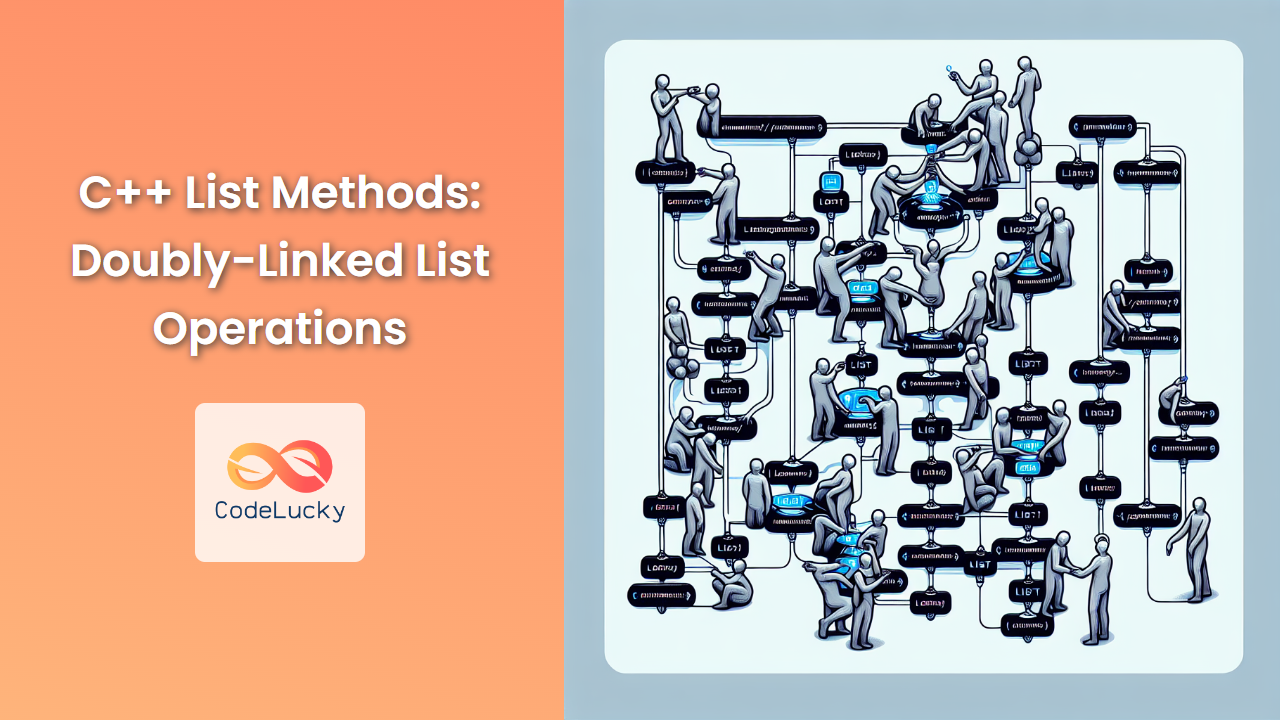In the world of C++ programming, user input is a crucial aspect that allows for dynamic and interactive applications. Two primary methods for capturing user input in C++ are cin and getline. These functions, part of the <iostream> library, offer different capabilities and are suited for various scenarios. In this comprehensive guide, we'll explore both methods in depth, providing you with the knowledge to effectively handle user input in your C++ programs.
Understanding cin
The cin object, which stands for "character input," is the most commonly used method for reading input from the standard input stream (usually the keyboard). It's particularly useful for reading formatted input, such as integers, floating-point numbers, and single words.
Basic Usage of cin
Let's start with a simple example:
#include <iostream>
using namespace std;
int main() {
int age;
cout << "Enter your age: ";
cin >> age;
cout << "You are " << age << " years old." << endl;
return 0;
}
In this example, cin reads an integer value from the user and stores it in the age variable. The >> operator is used to extract data from the input stream and place it into the variable.
📊 Input/Output Table:
| Input | Output |
|---|---|
| 25 | You are 25 years old. |
| 30 | You are 30 years old. |
Reading Multiple Values with cin
cin can also be used to read multiple values in a single line:
#include <iostream>
using namespace std;
int main() {
int day, month, year;
cout << "Enter your birthdate (DD MM YYYY): ";
cin >> day >> month >> year;
cout << "Your birthdate is: " << day << "/" << month << "/" << year << endl;
return 0;
}
📊 Input/Output Table:
| Input | Output |
|---|---|
| 15 03 1990 | Your birthdate is: 15/3/1990 |
| 7 11 2000 | Your birthdate is: 7/11/2000 |
Limitations of cin
While cin is versatile, it has some limitations:
-
Whitespace handling:
cinstops reading at the first whitespace character it encounters. This makes it unsuitable for reading strings with spaces. -
Buffer issues: If there's leftover input in the buffer, subsequent
cinoperations might behave unexpectedly. -
No error checking:
cindoesn't provide built-in error checking for input validation.
Let's look at an example that demonstrates these limitations:
#include <iostream>
using namespace std;
int main() {
string name;
int age;
cout << "Enter your full name: ";
cin >> name;
cout << "Enter your age: ";
cin >> age;
cout << "Hello, " << name << "! You are " << age << " years old." << endl;
return 0;
}
📊 Input/Output Table:
| Input | Output |
|---|---|
| John Doe 30 | Hello, John! You are 30 years old. |
| Alice Smith 25 | Hello, Alice! You are 25 years old. |
Notice how cin only captures the first name in both cases, ignoring the rest of the input.
Introducing getline
To overcome the limitations of cin, especially when dealing with string input that may contain spaces, C++ provides the getline function. This function reads an entire line of text, including whitespace, until it encounters a newline character.
Basic Usage of getline
Here's a simple example using getline:
#include <iostream>
#include <string>
using namespace std;
int main() {
string fullName;
cout << "Enter your full name: ";
getline(cin, fullName);
cout << "Hello, " << fullName << "!" << endl;
return 0;
}
📊 Input/Output Table:
| Input | Output |
|---|---|
| John Doe | Hello, John Doe! |
| Alice B. Smith | Hello, Alice B. Smith! |
As you can see, getline captures the entire line, including spaces.
Using getline with Delimiters
getline can also be used with a delimiter other than the default newline character:
#include <iostream>
#include <string>
using namespace std;
int main() {
string item;
cout << "Enter item name and price separated by a comma: ";
getline(cin, item, ',');
cout << "Item name: " << item << endl;
float price;
cin >> price;
cout << "Price: $" << price << endl;
return 0;
}
📊 Input/Output Table:
| Input | Output |
|---|---|
| Apple,1.99 | Item name: Apple |
| Price: $1.99 | |
| Banana,0.99 | Item name: Banana |
| Price: $0.99 |
In this example, getline reads until it encounters a comma, allowing us to separate the item name from its price.
Combining cin and getline
When using cin and getline together, you might encounter an issue where getline seems to be skipped. This is due to the newline character left in the input buffer after a cin operation. To resolve this, you can use cin.ignore() to clear the buffer:
#include <iostream>
#include <string>
using namespace std;
int main() {
int age;
string name;
cout << "Enter your age: ";
cin >> age;
cin.ignore(); // Clear the newline from the buffer
cout << "Enter your full name: ";
getline(cin, name);
cout << "Hello, " << name << "! You are " << age << " years old." << endl;
return 0;
}
📊 Input/Output Table:
| Input | Output |
|---|---|
| 30[Enter] | Enter your age: 30 |
| John Doe[Enter] | Enter your full name: John Doe |
| Hello, John Doe! You are 30 years old. | |
| 25[Enter] | Enter your age: 25 |
| Alice Smith[Enter] | Enter your full name: Alice Smith |
| Hello, Alice Smith! You are 25 years old. |
Advanced Input Handling Techniques
Now that we've covered the basics, let's explore some advanced techniques for handling user input in C++.
Input Validation
Input validation is crucial for creating robust programs. Here's an example of how to validate numeric input:
#include <iostream>
#include <limits>
using namespace std;
int getValidAge() {
int age;
while (true) {
cout << "Enter your age (0-120): ";
if (cin >> age && age >= 0 && age <= 120) {
return age;
} else {
cout << "Invalid input. Please try again." << endl;
cin.clear();
cin.ignore(numeric_limits<streamsize>::max(), '\n');
}
}
}
int main() {
int validAge = getValidAge();
cout << "Your age is: " << validAge << endl;
return 0;
}
This function ensures that the entered age is a number between 0 and 120, prompting the user to re-enter if the input is invalid.
📊 Input/Output Table:
| Input | Output |
|---|---|
| 25 | Your age is: 25 |
| -5 | Invalid input. Please try again. |
| 150 | Invalid input. Please try again. |
| abc | Invalid input. Please try again. |
| 30 | Your age is: 30 |
Reading Until a Sentinel Value
Sometimes, you might want to read input until a specific value (sentinel) is entered. Here's an example that reads numbers until -1 is entered:
#include <iostream>
#include <vector>
using namespace std;
int main() {
vector<int> numbers;
int input;
cout << "Enter numbers (-1 to stop):" << endl;
while (true) {
cin >> input;
if (input == -1) break;
numbers.push_back(input);
}
cout << "You entered: ";
for (int num : numbers) {
cout << num << " ";
}
cout << endl;
return 0;
}
📊 Input/Output Table:
| Input | Output |
|---|---|
| 5 3 8 2 -1 | You entered: 5 3 8 2 |
| 10 20 30 -1 | You entered: 10 20 30 |
Handling Different Types of Input
Sometimes, you might need to handle different types of input based on user choice. Here's an advanced example:
#include <iostream>
#include <string>
#include <vector>
using namespace std;
struct Item {
string name;
double price;
};
void addItem(vector<Item>& inventory) {
Item newItem;
cout << "Enter item name: ";
getline(cin, newItem.name);
cout << "Enter item price: $";
cin >> newItem.price;
cin.ignore();
inventory.push_back(newItem);
}
void displayInventory(const vector<Item>& inventory) {
cout << "\nCurrent Inventory:\n";
for (const auto& item : inventory) {
cout << item.name << " - $" << item.price << endl;
}
}
int main() {
vector<Item> inventory;
char choice;
do {
cout << "\nInventory Management\n";
cout << "1. Add Item\n";
cout << "2. Display Inventory\n";
cout << "3. Exit\n";
cout << "Enter your choice: ";
cin >> choice;
cin.ignore();
switch (choice) {
case '1':
addItem(inventory);
break;
case '2':
displayInventory(inventory);
break;
case '3':
cout << "Exiting program.\n";
break;
default:
cout << "Invalid choice. Please try again.\n";
}
} while (choice != '3');
return 0;
}
This program demonstrates a more complex scenario where different types of input (characters for menu choices, strings for item names, and doubles for prices) are handled in a single application.
📊 Sample Input/Output:
Inventory Management
1. Add Item
2. Display Inventory
3. Exit
Enter your choice: 1
Enter item name: Laptop
Enter item price: $999.99
Inventory Management
1. Add Item
2. Display Inventory
3. Exit
Enter your choice: 1
Enter item name: Mouse
Enter item price: $29.99
Inventory Management
1. Add Item
2. Display Inventory
3. Exit
Enter your choice: 2
Current Inventory:
Laptop - $999.99
Mouse - $29.99
Inventory Management
1. Add Item
2. Display Inventory
3. Exit
Enter your choice: 3
Exiting program.
Best Practices for User Input in C++
To wrap up our comprehensive guide on C++ user input, let's discuss some best practices:
-
Always validate user input: Never trust user input. Always check for validity to prevent unexpected behavior or crashes.
-
Use appropriate input methods: Choose between
cinandgetlinebased on your specific needs. Usecinfor simple types andgetlinefor strings that may contain spaces. -
Clear the input buffer: When switching between
cinandgetline, remember to clear the input buffer to avoid unexpected behavior. -
Provide clear instructions: Always give users clear instructions on what input is expected and in what format.
-
Handle errors gracefully: When invalid input is detected, provide helpful error messages and allow the user to retry.
-
Use type-safe input: When possible, read input into the correct data type directly, rather than reading as a string and then converting.
-
Consider using a robust input library: For complex input scenarios, consider using a library like
<boost/lexical_cast.hpp>for more robust type conversion and error handling.
By following these practices and understanding the nuances of cin and getline, you'll be well-equipped to handle user input effectively in your C++ programs. Remember, good input handling is key to creating user-friendly and robust applications. Happy coding! 🚀💻
Conclusion
Mastering user input in C++ is a fundamental skill that opens up a world of possibilities for interactive and dynamic programming. Whether you're using cin for simple data types or getline for more complex string input, understanding these tools and their appropriate usage scenarios is crucial.
We've covered a wide range of topics, from basic input operations to advanced techniques like input validation and handling different types of input in a single program. By applying these concepts and following the best practices outlined, you'll be able to create more robust, user-friendly C++ applications.
Remember, practice is key to becoming proficient with these concepts. Try implementing these examples in your own projects, and don't be afraid to experiment with different input scenarios. As you gain experience, you'll develop an intuition for choosing the right input method for each situation.
Keep exploring, keep coding, and most importantly, keep learning! The world of C++ is vast and exciting, and mastering user input is just the beginning of your journey. 🌟🖥️

